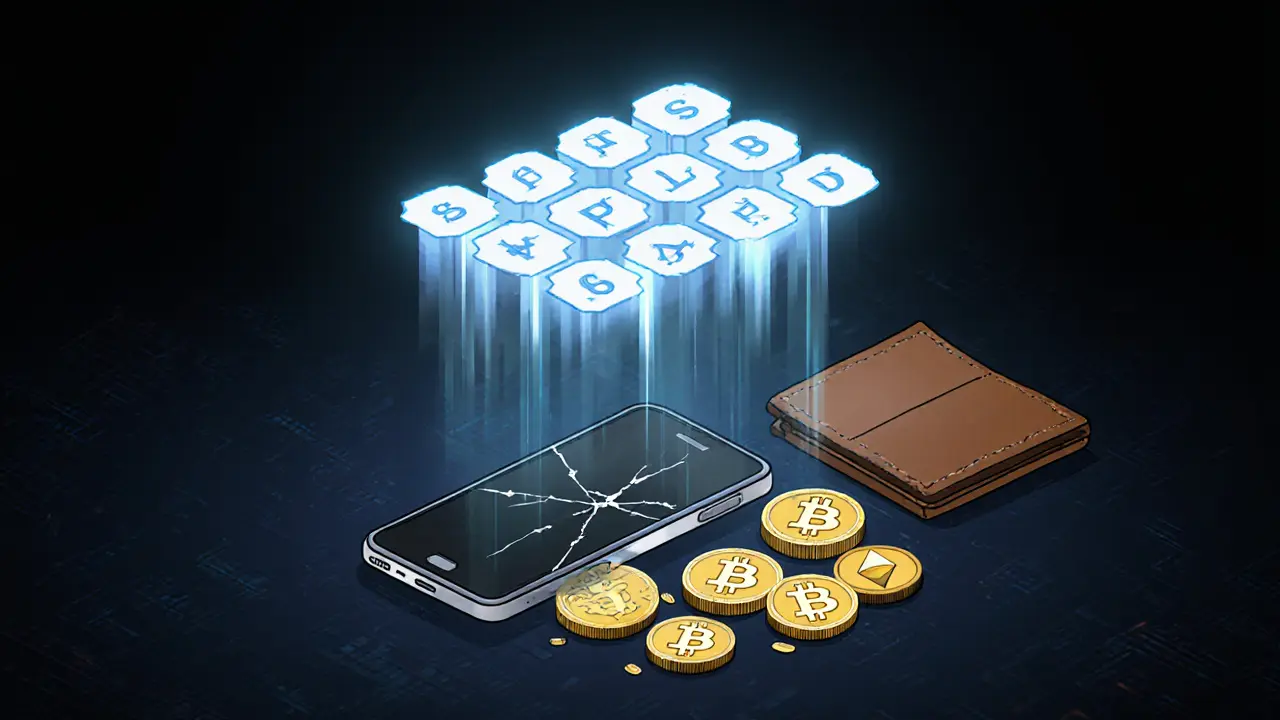Crypto Wallet Backup: How to Save Your Keys and Avoid Losing Everything
When you hold cryptocurrency, your crypto wallet backup, a secure copy of your access credentials that lets you recover funds if your device is lost, stolen, or damaged. Also known as wallet recovery, it's the only thing standing between you and permanent loss. No exchange, no app, no customer service can help you if you don’t have it. Your private key, a unique string of letters and numbers that proves you own your crypto is the real owner of your money — and if you lose it, your coins vanish forever.
A seed phrase, a human-readable set of 12 to 24 words generated when you create a wallet, used to regenerate your private keys is the most common form of backup. It’s not a password — it’s your master key. Writing it on paper and storing it in a fireproof safe works better than any digital method. Storing it on your phone, cloud drive, or email? That’s not a backup — that’s a target. Hackers scan for files named "mnemonic", "seed", or "recovery" — and they find them. Real users who lost crypto didn’t get hacked; they just never wrote down their words, or they took a screenshot and forgot where it was saved.
Most people think backup means "I have it saved somewhere." But if you can’t find it in a crisis, it doesn’t exist. The posts below show how often people confuse fake recovery tools with real ones — like the "NAMA airdrop" scams that trick users into giving up their seed phrases, or how the JPEX scandal, a fraudulent crypto platform that stole millions by pretending to be a legitimate exchange preyed on users who thought their wallet was safe because they used an app. Others lost everything because they trusted a "backup" service that turned out to be a front for theft. This isn’t theoretical. It’s happening every day.
You don’t need fancy tools. You don’t need blockchain experts. You just need to write down 12 words, put them in a place no one else can reach, and test the recovery process once — on a small amount — to make sure it works. If you’ve ever wondered why someone lost their Bitcoin after a hard drive crash, or why a family member couldn’t access crypto after the owner passed away, the answer is always the same: no backup, or a bad one. The posts here cover real cases: how NFT metadata links to storage failures, why decentralized storage like IPFS can’t replace your seed phrase, and how exchanges like Coinlim and HTX can’t help you if your wallet is gone. They also warn you about fake airdrops that ask for your recovery words — because if you give those away, you’ve already lost.
There’s no magic fix. No app can recover your wallet if you lost the seed phrase. No government will refund you. No tech support can reset your keys. The only thing that matters is what you did — or didn’t do — before things went wrong. Below, you’ll find real stories, clear breakdowns, and no-fluff advice on how to actually protect your crypto. Not tomorrow. Not later. Right now.
Understanding BIP39 Seed Phrase Standard for Crypto Wallet Recovery
Learn how BIP39 seed phrases work, why they're the backbone of crypto wallet recovery, and how to use them safely to avoid losing your digital assets forever.
learn more